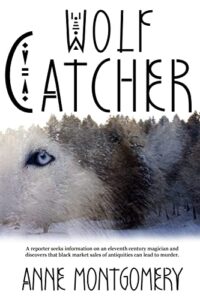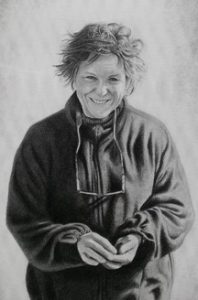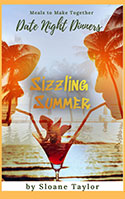How Old am I Supposed to Look?
January 16, 2023 | Author Friend Promo
from Anne Montgomery
 I like to think – in fact, I believe – that in olden times wrinkles signified wisdom and dignity. Today, not so much. Drug makers, who are looking to wipe our faces clean of those evil little lines, are frothing at the mouth to create a product that smooths our skin, an effort to pump up their profits in what is an almost one-billion dollar a year industry.
I like to think – in fact, I believe – that in olden times wrinkles signified wisdom and dignity. Today, not so much. Drug makers, who are looking to wipe our faces clean of those evil little lines, are frothing at the mouth to create a product that smooths our skin, an effort to pump up their profits in what is an almost one-billion dollar a year industry.
I became acutely aware of wrinkles as I approached 40. Unbeknownst to me, I was nearing the end of my on-camera sportscasting career, not because I wasn’t good at my job. After all, I’d worked for five TV stations, so, logically, I opined, I must have been a competent reporter. But then, my final contract was not renewed and not a single TV outlet in the country expressed an interest in me, despite my credentials, which included working at both the local and national levels with a stint anchoring SportsCenter at ESPN.
It took me a while to catch on. Glimpses of older on-camera women I’d worked with – especially those framed unforgivingly in HD – more than hinted that they’d had “work” done. Then I’d look in the mirror. Did I really look all that different than when I first took my place in front of the camera?
My answer finally came in rather shocking fashion, a situation caused by years of sports officiating. I began calling amateur games in 1979. I first became a youth ice hockey official, which lead to me being certified in football, baseball, soccer, and basketball. It was those outside sports and silly rules about perception that doomed me. Until relatively recently, sports officials were not allowed to wear sunglasses. In fact, many still eschew regular glasses, as well, opting for contacts, lest they set themselves up for the “What are ya, blind, ump?” retorts that are often flung at sports arbiters.
My loss of vision was gradual, but eventually it was clear something had to be done. Driving at night was difficult, the glare of oncoming headlights excruciating. I couldn’t see those line drives heading my way and would lose passes and kicks in the harsh stadium lights. I had cataracts, sadly, thirty years before the age my parents developed them.
The surgery was quick and simple. I remember thinking the inside of my eyeballs looked like Jackson Pollack paintings, all swirling lines and colors. A day or two later, I stood before the mirror. The haze I’d been looking through for so long had lifted, my sight clear for the first time in years. I reared back. When had all those wrinkles appeared?
It took a while, but I eventually adjusted. I had to admit that my face no longer mattered all that much. Neither my high school students, my beau, nor anyone I cared about gave a whit about whether I had lines on my face. In retrospect, it was rather freeing.
But then one day, while walking by one of those upscale salons in a fancy mall, I was stopped by a pretty twenty-something woman with an alluring accent and flawless skin. She stared at me, tilting her head, long hair cascading about her shoulders.
“Come in! Please.” She smiled, motioning toward the ornate open doors. “Let’s take a look at your face.”
As I had a little time to kill, I acquiesced. She put me in a pump-up chair and produced fancy bottles and jars of creams and elixirs guaranteed to make me look younger. Then she handed me that dreaded little round mirror that magnifies to the extreme. I’d like to say I had never succumbed to this particular sales pitch, but I suddenly recalled all those TV years when I thought nothing of dropping two or three hundred bucks on products like the ones she was showing me.
I gazed into the mirror, and then stared up at her. “How old am I supposed to look?”
She paused, tilted her head. “Younger.”
“How much younger?”
She squinted, seemingly puzzled by the question.
“Really? What age am I supposed to look like?”
She pouted, thinking. The smile returned as she dipped the end of her manicured pinky into a blue glass jar. “Younger.”
Then I noticed my long-time beau standing in the doorway of the salon, a bemused look on his face, a man who repeatedly, over two decades, had told me that he doesn’t care if I ever wear makeup or fix my hair or don anything but jeans and T-shirts.
Though she practically implored me to buy some of her magic creams, I declined. As I walked out the door, I couldn’t help but ask her one more time. “How old am I supposed to look?” When she couldn’t answer, I smiled and thanked her. Then Ryan wrapped his arm around my shoulder.
“I love you just the way you are,” he said.
Back when I worked in TV, the condition of my hair and makeup was, sad to say, the most important consideration of my day. Years later, I began dating a lovely man who had an artist draw my portrait. The picture he chose was from a day we’d been out rock collecting in the Arizona desert.
I had found a lovely stone, which I cupped in my hands to show him. No make-up. Hair a wild mess.
“You’re the happiest when you’re rocking,” he said. “This is my favorite picture of you.”
And now, it’s my favorite too.
Allow me to offer you a glimpse at my latest women’s fiction novel for you reading pleasure.
 The past and present collide when a tenacious reporter seeks information on an eleventh century magician…and uncovers more than she bargained for.
The past and present collide when a tenacious reporter seeks information on an eleventh century magician…and uncovers more than she bargained for.
In 1939, archaeologists uncovered a tomb at the Northern Arizona site called Ridge Ruin. The man, bedecked in fine turquoise jewelry and intricate beadwork, was surrounded by wooden swords with handles carved into animal hooves and human hands. The Hopi workers stepped back from the grave, knowing what the Moochiwimi sticks meant. This man, buried nine-hundred years earlier, was a magician.
Former television journalist Kate Butler hangs on to her investigative reporting career by writing freelance magazine articles. Her research on The Magician shows he bore some European facial characteristics and physical qualities that made him different from the people who buried him. Her quest to discover The Magician’s origin carries her back to a time when the high desert world was shattered by the birth of a volcano and into the present-day dangers of archaeological looting where black market sales of antiquities can lead to murder.
AMAZON BUY LINK
Anne Montgomery has worked as a television sportscaster, newspaper and magazine writer, teacher, amateur baseball umpire, and high school football referee. She worked at WRBL‐TV in Columbus, Georgia, WROC‐TV in Rochester, New York, KTSP‐TV in Phoenix, Arizona, ESPN in Bristol, Connecticut, where she anchored the Emmy and ACE award‐winning SportsCenter, and ASPN-TV as the studio host for the NBA’s Phoenix Suns. Montgomery has been a freelance and staff writer for six publications, writing sports, features, movie reviews, and archeological pieces.
When she can, Anne indulges in her passions: rock collecting, scuba diving, football refereeing, and playing her guitar.
Learn more about Anne Montgomery on her website and Wikipedia. Stay connected on Facebook, Linkedin, and Twitter.






